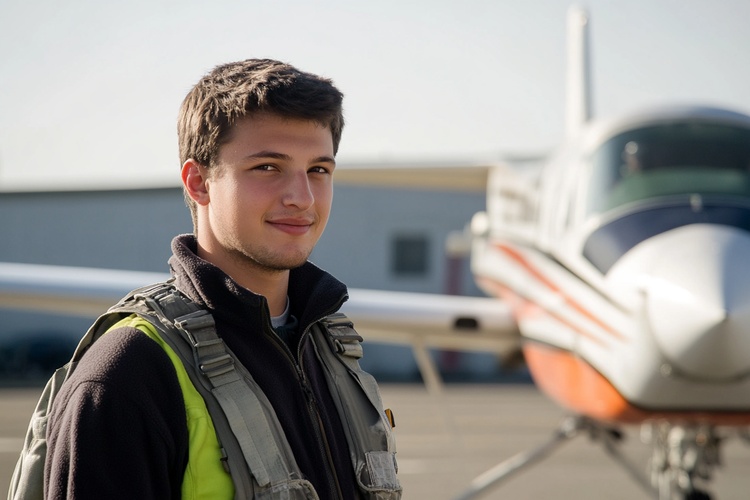Unlocking the Skies: The Critical Role of Aviation Training in Your Career
In the ever-evolving world of aviation, proper training serves as the foundation for every aspiring pilot or aviation professional. Whether you’re dreaming of flying commercial jets or mastering the art of operating specialized aircraft, investing in high-quality aviation training is critical. Here’s a comprehensive look at why aviation training is essential, what it involves, and how it can shape a successful career in the skies.

What are the key components of aviation training?
Aviation training encompasses a wide range of disciplines and skills that are crucial for safe and efficient flight operations. The core components typically include:
-
Ground School: This theoretical phase covers subjects such as aerodynamics, meteorology, navigation, aircraft systems, and aviation regulations.
-
Flight Simulator Training: Aspiring pilots practice various flight scenarios and procedures in a controlled environment, honing their skills before taking to the actual skies.
-
In-Flight Training: Students accumulate flight hours under the supervision of certified instructors, learning to operate aircraft in real-world conditions.
-
Emergency Procedures: Training in handling various emergency situations is critical for ensuring safety in the air.
-
Communications: Pilots learn to effectively communicate with air traffic control and other aviation professionals.
How does aviation training build the foundation for a pilot’s career?
Aviation training forms the building blocks of a pilot’s career by providing the necessary knowledge, skills, and certifications required to operate aircraft safely and professionally. Here’s how:
-
Licensing: Training programs prepare students for various pilot licenses, from private pilot to airline transport pilot.
-
Skill Development: Through rigorous practice, pilots develop the motor skills and decision-making abilities needed for flying.
-
Safety Culture: Training instills a strong safety mindset, which is paramount in the aviation industry.
-
Career Progression: Additional training allows pilots to advance their careers, moving from smaller aircraft to larger, more complex ones.
-
Specialization: Specialized training enables pilots to pursue niche areas such as aerobatics, bush flying, or medical evacuation.
What role does aviation training play in mastering safety and regulations?
Safety is paramount in aviation, and training plays a crucial role in ensuring that all aviation professionals are well-versed in safety protocols and regulatory requirements. This includes:
-
Understanding and applying aviation laws and regulations
-
Learning to perform pre-flight checks and risk assessments
-
Mastering emergency procedures and protocols
-
Developing situational awareness and decision-making skills
-
Staying updated on industry best practices and safety innovations
How does aviation training evolve from ground school to cockpit?
The journey from ground school to the cockpit is a carefully structured progression designed to build confidence and competence. It typically follows this path:
-
Ground School: Students begin with theoretical knowledge, laying the foundation for practical application.
-
Basic Flight Training: Initial flights focus on fundamental maneuvers and aircraft control.
-
Advanced Maneuvers: As skills improve, students learn more complex flying techniques.
-
Navigation and Cross-Country Flying: Pilots develop skills in planning and executing longer flights.
-
Instrument Training: Students learn to fly solely by reference to instruments, a critical skill for commercial pilots.
-
Multi-Engine Training: For those pursuing commercial careers, learning to operate multi-engine aircraft is often the next step.
-
Type Rating: Pilots obtain specific qualifications for particular aircraft models, especially in commercial aviation.
What unique challenges and opportunities exist in aviation training worldwide?
Aviation training faces both challenges and opportunities on a global scale. Some unique aspects include:
-
Technological Advancements: The integration of virtual reality and advanced flight simulators is revolutionizing training methods.
-
Global Pilot Shortage: Many regions are experiencing a shortage of qualified pilots, creating opportunities for those entering the field.
-
Regulatory Differences: Training programs must adapt to varying regulations across different countries and regions.
-
Environmental Concerns: There’s an increasing focus on eco-friendly flying techniques and sustainable aviation practices in training curricula.
-
Cultural Diversity: International aviation requires training in cross-cultural communication and collaboration.
What are the costs and options for pursuing aviation training?
Aviation training can be a significant investment, but it’s crucial for a successful career in the field. Here’s an overview of typical costs and options:
| Training Type | Provider | Cost Estimation |
|---|---|---|
| Private Pilot License | Flight Schools (e.g., ATP Flight School) | $10,000 - $15,000 |
| Commercial Pilot License | Aviation Universities (e.g., Embry-Riddle) | $50,000 - $80,000 |
| Airline Transport Pilot License | Major Airlines (e.g., United Aviate Academy) | $70,000 - $100,000 |
| Type Rating (e.g., Boeing 737) | Specialized Training Centers (e.g., CAE) | $25,000 - $35,000 |
Prices, rates, or cost estimates mentioned in this article are based on the latest available information but may change over time. Independent research is advised before making financial decisions.
Options for financing aviation training include:
-
Flight school financing programs
-
Aviation-specific student loans
-
Scholarships and grants from aviation organizations
-
Military service (with subsequent transition to civilian aviation)
-
Cadet programs offered by some airlines
Aviation training is a significant investment in both time and resources, but it’s the key to unlocking a rewarding career in the skies. From mastering the fundamentals in ground school to gaining real-world experience in the cockpit, each stage of training contributes to building confident, competent, and safety-conscious aviation professionals. As the industry continues to evolve, staying current with training and embracing new technologies will be crucial for long-term success in this dynamic field.




